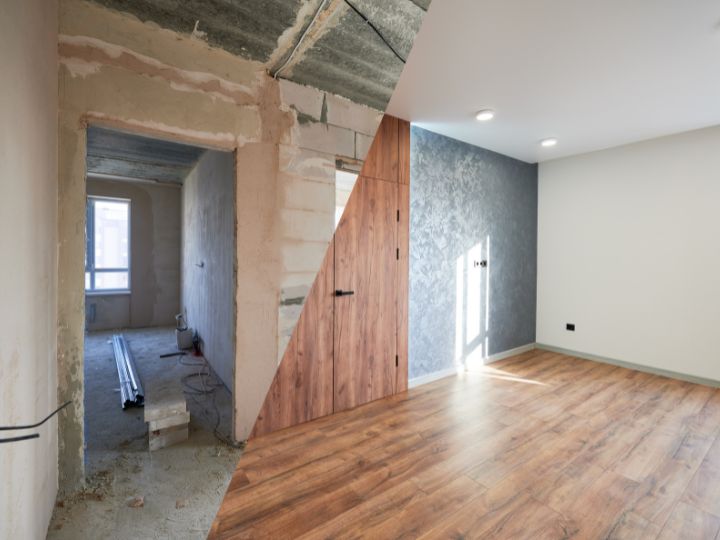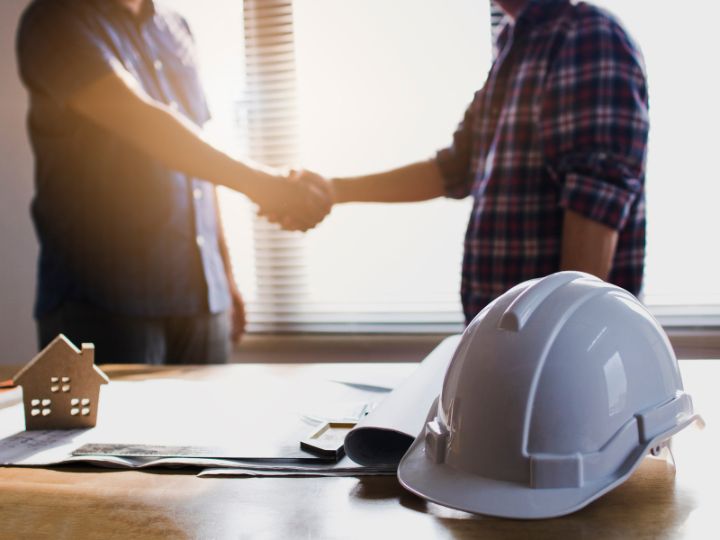
Riverside Remodeling: Special Considerations for Grand River Properties

Living along the Grand River offers unparalleled natural beauty and recreational opportunities, but riverside properties present unique challenges and considerations when planning remodeling projects. Whether you're updating a kitchen, adding a home addition, or finishing your basement, understanding the specific requirements for Grand River properties is essential for a successful renovation.
Understanding Grand River's Flood History and Patterns
The Grand River has a well-documented history of flooding events that directly impact remodeling decisions for riverside properties. The Grand River Flood of 1904 impacted Central and Southern Lower Michigan, with flooding most prevalent in the Grand, Kalamazoo, Saginaw, and River Raisin Basins. More recently, the 2013 Grand Rapids flood lasted from April 12 to 25, 2013, affecting multiple areas in the Grand Rapids metropolitan area, with the river cresting at 21.85 feet in Grand Rapids on April 21, 2013.
Over 1200 homes were flooded and high water closed over 300 roads during the 2013 event. Record stages were set at 5 locations along the Grand River, with damage estimated to be in excess of $43 million. Understanding this flood history is crucial when planning any renovation project along the river.
Regulatory Requirements and Permits
State Floodplain Regulations
In Michigan, any construction, fill or alteration of a floodplain of a river, stream, or drain which has a drainage area greater than or equal to 2 square miles will require a state floodplain permit under Part 31 of the Natural Resources and Environmental Protection Act. This applies to most Grand River properties, as the river's drainage area far exceeds this threshold.
Key regulatory considerations include:
Elevation Requirements: The current building codes in Michigan require that new construction or substantially improved buildings within the 100-year floodplain have the lowest floor elevated at least one-foot above the 100-year flood elevation. Basements that are below grade on all four sides must be 1 foot above the 100-year floodplain elevation.
Floodway Restrictions: Residential construction is prohibited within the floodway portion of the floodplain. Commercial construction may be permitted within the floodway, however, a hydraulic analysis may be required which demonstrates that the proposal will not be harmful.
Local Building Permits
Building permits are required for remodeling projects, repairs, replacements, new structures, additions, re-roofing, decks, driveways, sheds, pools and fences. Some of these activities may not be permitted or may be restricted in scope if they will be located within a Special Flood Hazard Area (SFHA).
Foundation and Waterproofing Considerations
Enhanced Waterproofing Requirements
Riverside properties face significantly higher moisture challenges than typical residential properties. Foundation waterproofing is the process of preventing water intrusion, from subtle water seepage to flooding when the ground is over-saturated. For Grand River properties, this becomes especially critical.
Hydrostatic Pressure Management: Hydrostatic pressure happens when gravity pushes static (stagnant-dense) water against below-grade walls built entirely or partially on a hillside or below the water table. Properties near the Grand River often experience elevated water tables, making comprehensive waterproofing essential.
Interior Drainage Systems: The most popular way to keep a basement dry is to capture and remove water with a perimeter drain and sump pump system. A system designed around interior drainage is the least disruptive method of foundation waterproofing. This approach is particularly valuable for existing riverside homes where exterior excavation may be challenging.
Basement Considerations
When planning basement finishing projects on Grand River properties, additional precautions are necessary:
Vapor Barriers: The process involves applying waterproof sealants to the interior basement walls, installing vapor barriers, and using a dehumidifier to help control humidity levels. While this approach will not stop water from reaching the foundation, it can help prevent it from seeping into your living spaces.
Flood-Resistant Materials: Select materials that can withstand occasional moisture exposure and are easy to clean and sanitize if flooding occurs.
Structural and Design Adaptations
Elevated Design Elements
For riverside properties, incorporating elevated design elements can protect your investment while maintaining aesthetic appeal:
Raised Foundation Systems: Consider raising the entire structure or key components above the base flood elevation, especially for home additions that expand toward the river.
Flood Vents: Install flood vents in foundation walls to allow water to flow through rather than creating destructive pressure against the structure.
Utility Placement
Electrical Systems: Elevate electrical panels, outlets, and HVAC equipment above the base flood elevation. This is particularly important for kitchen remodeling projects where numerous electrical components are involved.
Mechanical Systems: Position water heaters, furnaces, and other mechanical equipment on elevated platforms or in areas protected from potential flooding.
Site Grading and Drainage
Proper Slope Management
Make sure the ground slopes away from your foundation. This fundamental principle becomes even more critical for riverside properties where water management is paramount.
Surface Water Direction: Design landscaping and hardscaping to direct surface water away from structures and toward appropriate drainage systems.
French Drain Systems: Install a French drain system to divert water away from your foundation by digging a trench around your home's perimeter, placing a perforated pipe surrounded by gravel in the trench, and ensuring the pipe is sloped to direct water away from the foundation.
Material Selection for Riverside Conditions
Moisture-Resistant Materials
Choose materials specifically designed to handle higher moisture levels:
Flooring: Select waterproof or water-resistant flooring options such as luxury vinyl plank, tile, or sealed concrete for areas prone to moisture exposure.
Insulation: Use closed-cell foam insulation or other moisture-resistant insulation types to prevent water absorption and mold growth.
Siding and Exterior Materials: Choose materials that can withstand periodic exposure to higher humidity and potential water contact.
Sustainable and Flood-Resilient Options
Consider eco-friendly materials that also offer flood resistance:
Bamboo and Cork: These renewable materials offer natural moisture resistance while providing sustainable building options.
Recycled and Composite Materials: Many composite decking and siding options provide excellent moisture resistance while reducing environmental impact.
HVAC and Climate Control
Enhanced Humidity Control
Riverside properties typically require more robust humidity control systems:
Dehumidification Systems: Install whole-house dehumidifiers to maintain optimal indoor humidity levels year-round.
Ventilation Improvements: Enhance ventilation systems to ensure proper air circulation and moisture removal, particularly important for bathroom remodeling projects.
Backup Power Considerations
Generator Systems: Consider installing backup power systems to ensure sump pumps and dehumidifiers remain operational during power outages that may coincide with flooding events.
Insurance and Financial Considerations
Flood Insurance Requirements
The NFIP is a federal program enabling property owners to purchase flood insurance. The federal government makes flood insurance available to communities that agree to enforce requirements that will reduce future flood losses to new construction within the special flood hazard area (100-year floodplain).
Coverage Verification: Ensure your flood insurance policy covers structural improvements and upgrades made during remodeling.
Documentation: Maintain detailed documentation of all improvements for insurance and resale purposes.
Return on Investment
Riverside properties often command premium prices due to their desirable locations, but improvements must be carefully planned to maximize value while managing risk.
Working with Experienced Contractors
Specialized Knowledge Requirements
Riverside remodeling requires contractors with specific expertise in flood-resistant construction and familiarity with local regulations. The complexity of permits, specialized materials, and construction techniques demands professional guidance throughout the process.
When selecting a remodeling contractor for your Grand River property, look for professionals who understand the unique challenges of riverside construction. At Thornapple Construction, our team brings extensive experience with waterfront properties and the specialized knowledge required to navigate floodplain regulations while creating beautiful, functional living spaces. Our comprehensive approach to complete home remodeling includes proper assessment of site conditions, regulatory compliance, and selection of appropriate materials for riverside environments.
Seasonal Timing Considerations
Construction Scheduling
Plan construction activities around the Grand River's seasonal patterns:
Spring Considerations: Flooding due to snowmelt most often occurs in the spring when rapidly warming temperatures quickly melt the snow. Schedule foundation work and exterior projects for drier months when possible.
Weather Windows: Take advantage of stable weather periods for critical waterproofing and foundation work.
Long-Term Maintenance Planning
Preventive Maintenance
Develop a comprehensive maintenance schedule that addresses the unique needs of riverside properties:
Annual Inspections: Inspect the exterior foundation for cracks or signs of deterioration twice a year. Clean gutters and downspouts at least twice a year. Test your sump pump every three or four months.
Moisture Monitoring: Regularly monitor humidity levels and inspect for signs of water intrusion or moisture-related damage.
Emergency Preparedness
Develop and maintain emergency procedures for flood events, including:
Flood Response Plans: Create detailed plans for protecting renovated spaces during flood events.
Quick-Deployment Systems: Install systems that can be quickly activated to protect finished areas during emergencies.
Environmental Stewardship
Sustainable Practices
Riverside property owners have a unique opportunity and responsibility to protect water quality:
Native Landscaping: Use native plants that require minimal irrigation and help prevent erosion.
Permeable Surfaces: Choose permeable materials for driveways and walkways to reduce runoff.
Green Building Practices: Incorporate sustainable building practices that minimize environmental impact while enhancing flood resilience.
Working with Experienced Local Contractors
Remodeling a Grand River property requires careful planning, specialized knowledge, and attention to unique environmental factors. From understanding flood history and regulatory requirements to selecting appropriate materials and construction techniques, every aspect of the project must account for the property's riverside location.
Success depends on working with experienced general contractors who understand both the opportunities and challenges of riverside construction. By properly addressing waterproofing, drainage, elevation requirements, and material selection, homeowners can create beautiful, functional living spaces that stand up to the unique demands of riverside living while protecting their investment for years to come.
The key to a successful riverside remodeling project lies in balancing the desire to take advantage of the property's natural beauty with the practical need to protect against the inherent risks of waterfront living. With proper planning and execution, Grand River properties can be transformed into stunning, resilient homes that provide decades of enjoyment while maintaining their value and structural integrity.
Latest Blogs
Transform your dream home into reality with our premier renovation services!
Book a call with us today and let's create the perfect space tailored just for you.

.svg)
.svg)



